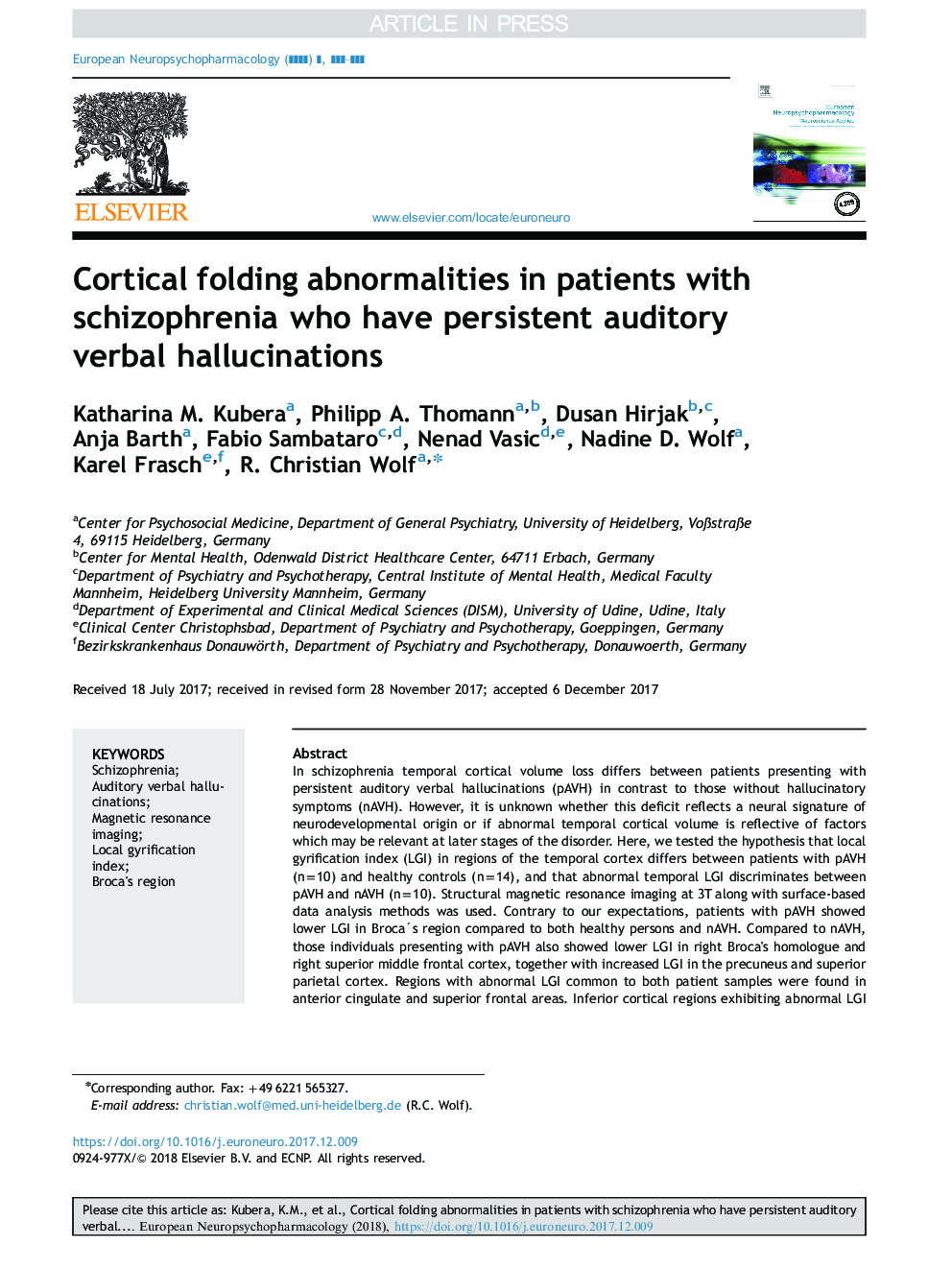| Article ID | Journal | Published Year | Pages | File Type |
|---|---|---|---|---|
| 6790865 | European Neuropsychopharmacology | 2018 | 10 Pages |
Abstract
In schizophrenia temporal cortical volume loss differs between patients presenting with persistent auditory verbal hallucinations (pAVH) in contrast to those without hallucinatory symptoms (nAVH). However, it is unknown whether this deficit reflects a neural signature of neurodevelopmental origin or if abnormal temporal cortical volume is reflective of factors which may be relevant at later stages of the disorder. Here, we tested the hypothesis that local gyrification index (LGI) in regions of the temporal cortex differs between patients with pAVH (n=10) and healthy controls (n=14), and that abnormal temporal LGI discriminates between pAVH and nAVH (n=10). Structural magnetic resonance imaging at 3T along with surface-based data analysis methods was used. Contrary to our expectations, patients with pAVH showed lower LGI in Broca´s region compared to both healthy persons and nAVH. Compared to nAVH, those individuals presenting with pAVH also showed lower LGI in right Broca's homologue and right superior middle frontal cortex, together with increased LGI in the precuneus and superior parietal cortex. Regions with abnormal LGI common to both patient samples were found in anterior cingulate and superior frontal areas. Inferior cortical regions exhibiting abnormal LGI in pAVH patients were associated with overall symptom load (BPRS), but not with measures of AVH symptom severity. The pattern of abnormal cortical folding in this sample suggests a neurodevelopmental signature in Broca's region, consistent with current AVH models emphasizing the pivotal role of language circuits and inner speech. Temporal cortical deficits may characterize patients with pAVH during later stages of the disorder.
Keywords
Related Topics
Life Sciences
Neuroscience
Biological Psychiatry
Authors
Katharina M. Kubera, Philipp A. Thomann, Dusan Hirjak, Anja Barth, Fabio Sambataro, Nenad Vasic, Nadine D. Wolf, Karel Frasch, R. Christian Wolf,
